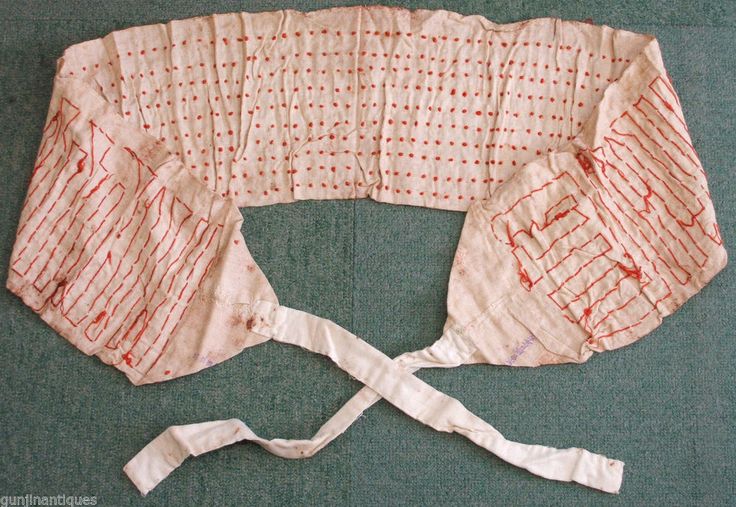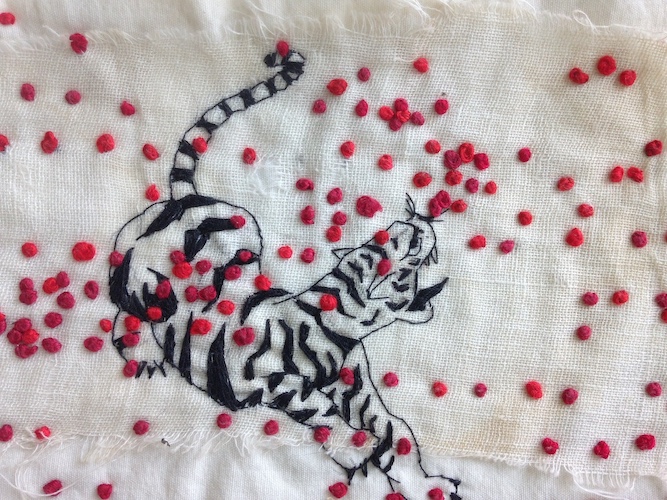
Senninbari & Death Before Defeat
Textile Composition, 2018
Original WWII bandage, embroidery floss and thread comprising tiger and eagle
33.5" x 5" (tails of bandage 21") x 1.5"
The Imperial Japanese Military abided by Bashido principles of warfare. Under these morals, death came before defeat. For a soldier to survive without being victorious was an unforgivable act of dishonor. Upon comprehension of defeat, the last group of Japanese attackers on Attu pulled grenades on themselves. Of the approximate 2500 Japanese soldiers, only 29 were taken alive.
The Japanese senninbari is a white strip of cloth decorated with one thousand red French knots and worn around a soldier's waist. A soldier’s wife, mother or sister prepared this amulet of protection and luck, with each knot traditionally tied by a different woman. In Japan, red and white are a lucky color combination. Imagery of tigers on senninbari were also common, symbolic of an animal that travels far from home but returns. Senninbari were still made during WWII. Similar in dimension, this WWII first aid bandage with 1000 knots echoes the senninbari.
“What a nightmare, a madness of noise and confusion and deadliness.”
Captain George S. Buehler regarding the final banzai charge up Engineer Hill on May 29, 1943.



Examples of historic senninbari, Public Domain.
